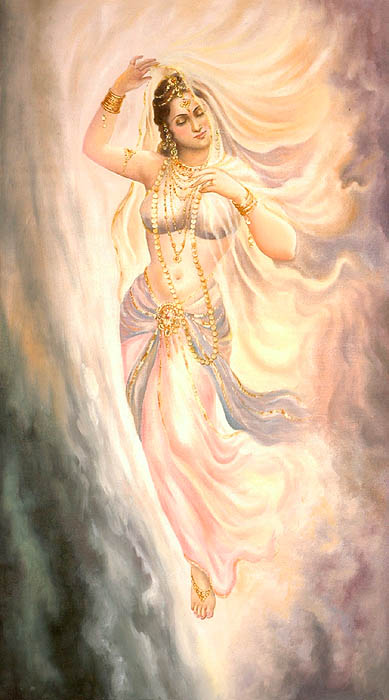iyyerram
Active member
We now wonder who the hell has introduced this tradition of wearing this much long saree, consuming half of the time to wear and also hard to maintain and restrictions in movement. In those days it was approved by all south Indian women, and nowadays nobody is interested to wear this. Only on the marriage day as per the costumes people are using 9 yards Saree.
The madisar is not just a garment or a style. "The madisar has both symbolic and practical meaning," says Seetha Anand, a young educator from Hyderabad, who says she "loves the look of the madisar - when worn well, it is so flattering". The nine yards of the sari function as the all-inclusive garment. It is worn without a petticoat or underskirt - unlike the normal six-yard sari - and, if wrapped properly, requires no other undergarment or upper garment (such as a blouse). "With one of the folds pulled through between the legs (and tucked into the back on the belt), the style fulfils the requirements of modesty and protection," says Anand.
The trouser-like style also made it easy to work and move around in. In fact, the tradition of a nine-yard sari was prevalent in many other Indian states like Maharashtra and Karnataka. History even mentions several women soldiers draped in a nine-yard sari going to war. Women like Jhansi's Queen Laxmibai fought enemy troops on horseback, wearing a nine-yard sari.
In South India, the nine-yard madisar also symbolizes the unity of the male and female principles of the universe. "The sari has pleats and the pallu (the upper decorative part of the saree), and the lower part looks like a dhoti," says Venkatraman 78, a homemaker from Chennai and an avid follower of religious traditions. "This is like the ardhanareeswara (half man and half woman)".
However, the sari is not an easy garment to wear. "It's good exercise every morning, because you have to bend, twist around, move your arms every which way...it is a good 10-minute workout! says Venkatraman.
The madisar is not just a garment or a style. "The madisar has both symbolic and practical meaning," says Seetha Anand, a young educator from Hyderabad, who says she "loves the look of the madisar - when worn well, it is so flattering". The nine yards of the sari function as the all-inclusive garment. It is worn without a petticoat or underskirt - unlike the normal six-yard sari - and, if wrapped properly, requires no other undergarment or upper garment (such as a blouse). "With one of the folds pulled through between the legs (and tucked into the back on the belt), the style fulfils the requirements of modesty and protection," says Anand.
The trouser-like style also made it easy to work and move around in. In fact, the tradition of a nine-yard sari was prevalent in many other Indian states like Maharashtra and Karnataka. History even mentions several women soldiers draped in a nine-yard sari going to war. Women like Jhansi's Queen Laxmibai fought enemy troops on horseback, wearing a nine-yard sari.
In South India, the nine-yard madisar also symbolizes the unity of the male and female principles of the universe. "The sari has pleats and the pallu (the upper decorative part of the saree), and the lower part looks like a dhoti," says Venkatraman 78, a homemaker from Chennai and an avid follower of religious traditions. "This is like the ardhanareeswara (half man and half woman)".
However, the sari is not an easy garment to wear. "It's good exercise every morning, because you have to bend, twist around, move your arms every which way...it is a good 10-minute workout! says Venkatraman.


